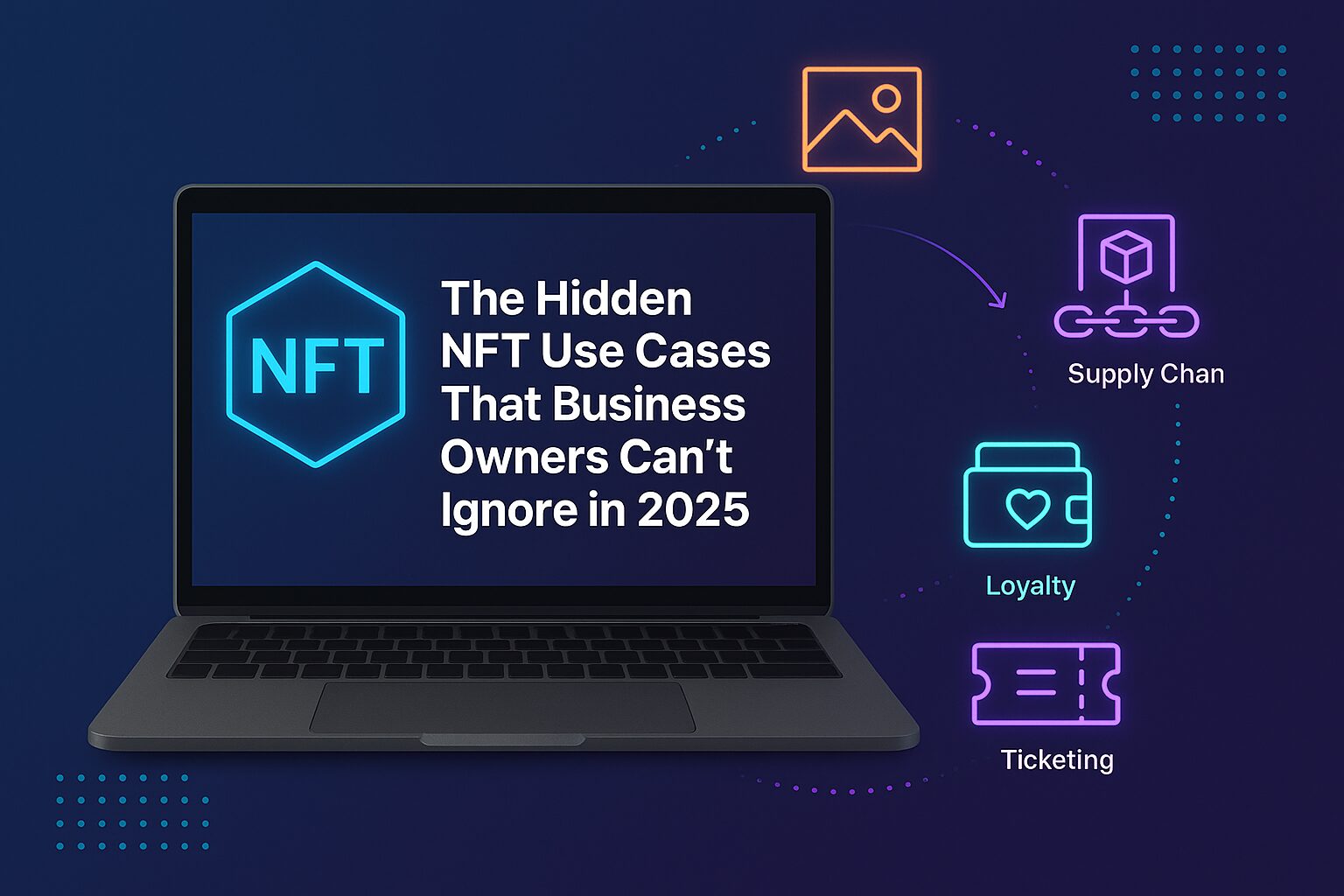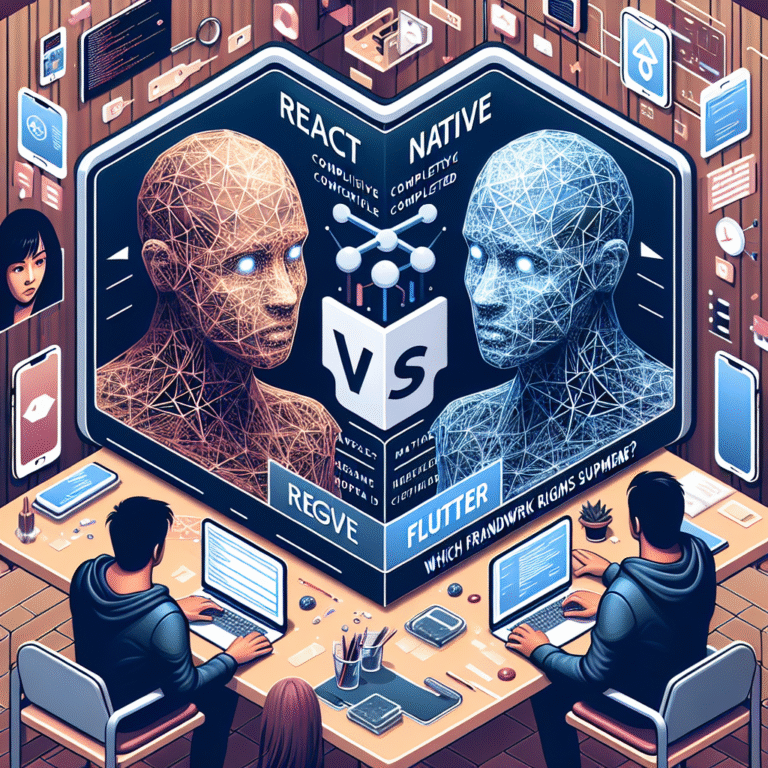
NFT use cases exploded into the mainstream as the market grew by more than 21,000% in 2021. Many people remember this period because of Beeple’s $69 million digital artwork sale. The future of NFTs stretches way beyond the reach and influence of collectible JPEGs.
NFTs are evolving faster from speculative assets into practical business tools. These tokens now provide verifiable ownership and create new economic models in gaming, digital identity, real estate, and ticketing. Blockchain-based tokens address ground issues effectively and support true ownership of digital products.
Business owners can’t afford to ignore how NFTs are reshaping the scene – from in-game assets and property deeds to event tickets and loyalty programs as we approach 2025. In this piece, we’ll explore the most promising NFT applications that could transform your business in the coming years.
The evolution of NFTs: From collectibles to business tools
NFTs emerged in 2014, and nobody could have predicted their meteoric rise or development into sophisticated business tools. Let’s explore how NFT use cases have transformed over time.
NFT 1.0: Art, collectibles, and hype
NFT 1.0 marked the birth of non-fungible tokens – digital assets with unique identification metadata that sets them apart. These original tokens had static metadata that didn’t change after creation. This feature perfectly matched their main purpose: representing ownership of digital art and collectibles.
We started by tokenizing digital items and auctioning them, often for staggering amounts. Many people misunderstood NFTs as mere speculation tools rather than practical instruments. Notwithstanding that, NFT 1.0 laid down some vital fundamentals:
- Proof of ownership for digital assets
- Creation of digital rarity
- Transferability across platforms
- Simple interoperability between systems
Despite these breakthroughs, first-generation NFTs couldn’t offer much beyond collecting and trading. An industry report stated, “Having static metadata is great for artwork and collectible NFTs. However, to build a strong and open NFT system that goes beyond artwork and collectibles, many attributes in the metadata need to be updated”.
NFT 2.0: Real-world utility and interoperability
NFT 2.0 or dynamic NFTs brought game-changing capabilities to the table. These tokens can update their metadata, respond to external events, and adapt based on user interactions.
This flexibility opened new practical applications:
- Gaming assets that adapt through gameplay
- Digital twins of physical products
- Smart contracts with programmable features
- Cross-chain operability between different blockchains
NFT 2.0 solves interoperability challenges through protocols like Polkadot and Cosmos, which help diverse blockchain networks communicate. Polkadot’s architecture supports over 100 connected chains, while Cosmos connects more than 200 independent chains through its Inter-Blockchain Communication protocol.
The difference stands out: NFT 1.0 enabled ownership and commercialization of tokenized digital items, while NFT 2.0 creates new digital asset markets with advanced utilities.
Why 2025 is a turning point for NFT adoption
The year 2025 marks a watershed moment for NFT adoption across industries. NFTs are becoming essential business infrastructure after years of testing and development.
Here’s what makes 2025 particularly important:
Utility-driven NFTs now lead the market. Most top-selling NFTs in 2025 include functional features like game mechanics, event access, governance rights, or collateral capabilities.
Cross-chain functionality has matured significantly. DappRadar reports that users completed over 38% of all NFT transactions in Q4 2024 through aggregator platforms instead of single marketplaces. This shows growing interest in connecting fragmented ecosystems.
Tokenization of real-world assets (RWAs) continues to accelerate. Experts predict NFT-based tokenization of RWAs will grow the market to over $230 billion by 2030.
Enterprise adoption has reached critical mass. Businesses from global fashion houses to logistics companies now use NFTs to involve customers, verify ownership, and track supply chains.
These trends meet in 2025, proving NFTs’ value beyond collectibles and establishing them as indispensable business tools.
NFTs in gaming: A new economy for digital ownership
NFTs have revolutionized the gaming industry. Digital ownership has created new economic systems. The market will grow from USD 4.8 billion in 2024 to USD 44.1 billion by 2034.
In-game assets as tradable NFTs
Game developers control traditional gaming assets within their ecosystem. Players essentially rent items after purchase, and their investments disappear if the game shuts down. NFTs change this dynamic by connecting ownership to the blockchain rather than the game itself.
Players now have complete control over their virtual possessions through true digital ownership. They can trade NFT-based gaming assets on external marketplaces without developer approval, similar to selling physical collectible cards. These assets live independently on the blockchain and survive even when the original game vanishes.
The difference matters greatly: developers have total control of traditional in-game items through their terms of service. NFT assets belong to the player—not the publisher—through blockchain verification. This ownership model has led to massive growth, with some rare gaming NFTs reaching prices of USD 1.50 million.
Play-to-earn models and revenue generation
Play-to-earn (P2E) has transformed gaming economics. Players earn real value through gameplay instead of just spending money. P2E creates several ways to generate revenue:
- Collecting and trading rare NFT items
- Earning native cryptocurrency tokens through daily gameplay
- Participating in tournaments with real-money prizes
- Developing and monetizing virtual land or resources
Axie Infinity shows this model’s potential with over one million active players. Players earn Smooth Love Potion (SLP) tokens through regular gameplay and Axie Infinity Shards (AXS) through competitions. Some users in Southeast Asia earned more than their local average wages by playing during the P2E boom.
Gods Unchained (card trading), Splinterlands (competitive battles), and The Sandbox (virtual real estate development) showcase how NFT-based economics create player-driven marketplaces that last.
Cross-game interoperability and asset portability
Gaming NFTs offer revolutionary interoperability that lets players use digital assets across multiple games or platforms. This concept increases items’ utility and value by allowing movement between different gaming environments.
NFTs solve a key problem in traditional gaming: trapped investments in isolated ecosystems. Blockchain-based assets can move between games, giving players unprecedented flexibility. A shield named “EpicShield” in one RPG could become a card in a deck-building game or a virtual building elsewhere.
Games can now build collaborative ecosystems instead of competing separately. New business opportunities emerge through shared in-game economies, cross-platform asset marketplaces, and multi-game subscription services. Players invest more deeply as their digital collections gain value beyond single games.
Technical hurdles exist—like standardization issues and design mismatches between game worlds—but the vision of an interconnected gaming metaverse drives continued breakthroughs in this space.
Digital identity and credentials: NFTs as trust layers
NFTs are now doing much more than just digital art and gaming. They create secure, verifiable trust layers for digital identity and credentials. This new use helps solve a big problem – more than 45% of employers find it hard to verify job applicants’ qualifications.
Soulbound tokens for non-transferable identity
Digital identity verification has seen a major breakthrough with Soulbound tokens (SBTs). These tokens work differently from regular NFTs. Once they’re issued to a wallet, you can’t transfer or sell them. They stick permanently to someone’s digital identity, which makes them perfect for personal information that shouldn’t be passed around, such as:
- Educational qualifications
- Professional certifications
- Medical records
- Credit histories
SBTs stay with their rightful owner because they can’t be transferred. This creates a solid base for building authentic digital reputation. These tokens will give a better way to keep sensitive information safe while letting people share their credentials selectively.
NFTs for academic and professional certifications
Schools are starting to use NFT-based credentials to curb qualification fraud. They now issue diplomas and certificates as blockchain-verified tokens. This creates records that nobody can tamper with.
This new system changes how we verify credentials in several ways:
Blockchain-based verification cuts down fraud risk by 75%. Digital credentials now exist on a distributed network instead of a single database, which makes them less likely to fail. People can now control their own credentials and share them with employers right away without any middlemen.
Each credential stored as an NFT has encrypted information about the course, school, and the person who earned it. These records stay permanent and unchangeable once they’re issued. Anyone can check them from anywhere in the world.
Web3 hiring and decentralized reputation systems
The Web3 world is creating new ways to hire people based on verified blockchain credentials. New jobs focused on NFTs are popping up. You’ll find NFT analysts, legal advisors, marketing specialists, and developers.
Decentralized reputation systems make use of information from NFTs to build networks people can trust. These systems use special equations, trust factors, and badges that encourage genuine digital creation. Users build their digital identities by collecting reputation tokens that show their achievements and endorsements. Employers can easily verify these credentials.
This system helps fix a worrying trend – about 20% of resumes have fake information. Blockchain verification makes hiring faster and helps companies avoid bad hires that cost around $240,000.
Real estate and property: Tokenizing physical assets
NFT technology is changing how the real estate industry works. Property tokenization creates digital certificates for physical assets on blockchain and solves many problems in this complex and inefficient industry.
NFTs for property deeds and ownership records
NFTs work as digital property deeds, and each token holds a property’s complete history, specifications, and ownership records. The blockchain stores this information permanently to create a transparent, tamper-proof record that anyone interested can access. NFT-based ownership verification reduces fraud risk and eliminates paperwork.
Ukraine saw the world’s first real property NFT sale in 2017 when someone bought an apartment for 36 ETH (about $93,000 at the time). Over the last several years, several platforms have emerged to aid property tokenization. These platforms allow ownership transfers almost instantly compared to processes that used to take weeks.
Fractional ownership and investment access
Fractional ownership might be the most promising way to use NFTs in real estate. NFTs split property deeds into multiple tokens so investors can buy small portions of high-value properties. This makes real estate investment available to more people by:
- Making it easier for small investors to enter the market
- Creating more liquid markets for previously static assets
- Making complex investment structures simpler
- Letting people spread their investments across multiple properties
Business partners can now buy storefronts together. Freelancers might pool money to purchase office space. People can invest in premium properties that were once out of reach.
Smart contracts for faster, transparent transactions
Smart contracts are the foundations of NFT real estate transactions. These self-executing agreements have terms written directly into code and fulfill predefined conditions without middlemen, which streamlines the process.
Trust is the biggest problem in traditional property sales. Sellers want payment before transferring title, while buyers want ownership before paying. This situation usually needs expensive help from brokers, lawyers, and escrow agents.
Smart contracts fix this issue by automating everything. Ownership transfers happen automatically once payment conditions are met, which can reduce closing times from weeks to hours or minutes. On top of that, these contracts can handle ongoing property ownership tasks, like distributing rental income for properties with multiple owners.
NFT-based real estate transactions will likely become standard practice as the technology matures. This technology offers speed and efficiency that the industry has never seen before.
NFTs in ticketing and loyalty programs
NFT technology has become a game-changer in the events industry. It solves age-old ticketing problems and creates innovative loyalty programs. These real-life applications show how nft use cases go way beyond digital art.
Preventing fraud and scalping with NFT tickets
Counterfeit tickets plague traditional ticketing systems, with about 12% of concert tickets turning out to be fake. NFT tickets solve this problem through blockchain’s permanent ledger system that makes tickets unique and impossible to copy. Organizers can track every ticket’s complete transaction history through transparent ownership records. NFT ticketing also tackles scalpers who buy tickets in bulk to resell at higher prices. Smart contracts built into these tickets can limit resale prices to keep the secondary market fair.
Programmable perks and resale royalties
NFT tickets shine brightest through their programmable nature. Traditional tickets can’t match these automatic features:
- Original issuers earn royalties from every resale
- Prices adjust based on market conditions
- Buyer information stays embedded for verification
Event organizers now control their tickets’ journey from first sale through multiple resales.
NFTs as digital collectibles and brand engagement tools
NFT tickets become precious digital collectibles once events end. These lasting mementos often grow more valuable as time passes. Companies now reimagine their loyalty programs with NFTs that unlock exclusive content, events, and special perks. Starbucks proved this concept with their Odyssey program where customers earn digital stamps they can trade for rewards. Adidas also found success by generating $22 million from their “Into the Metaverse Community Token” that gives members access to exclusive merchandise and events.
Conclusion
NFTs are at a significant turning point as we approach 2025. They’re moving from speculative assets to essential business infrastructure. The rise from static collectibles to dynamic, utility-driven tokens creates unprecedented opportunities for industries of all types. Business owners who spot these changes early will without doubt gain advantages over their competitors.
Several key trends have emerged from learning about NFT applications. Digital ownership changes how we see virtual assets, particularly in gaming where players control their in-game items independently. Blockchain verification builds tamper-proof systems for credentials and identity that solve long-standing trust issues in hiring and education. Property tokenization makes real estate investment more accessible and simplifies transactions. NFT-based ticketing stops fraud and creates new revenue streams through programmable features.
The business value of NFTs becomes obvious when you look at their practical benefits. They cut transaction costs, remove middlemen, boost security, and enable new revenue models. Smart business owners see NFTs as powerful tools to solve real-life challenges rather than just a technological novelty.
Mainstream adoption faces some hurdles. Technical barriers, regulatory uncertainty, and consumer education need attention. All the same, NFT technology continues to integrate deeper into business operations.
Smart entrepreneurs should start thinking about how NFTs could boost their specific business models. NFTs provide concrete advantages beyond their original hype cycle – whether through exclusive digital collectibles, verifiable credentials, or smoother asset transfers. Companies that experiment now will thrive best in the tokenized economy ahead of us.
Key Takeaways
NFTs are evolving from speculative collectibles into practical business tools that solve real-world problems across multiple industries. Here are the essential insights every business owner should understand:
• Gaming creates new economies: NFT-based gaming assets enable true digital ownership, play-to-earn models, and cross-game interoperability, with the market projected to grow from $4.8 billion to $44.1 billion by 2034.
• Digital credentials eliminate fraud: Soulbound tokens and blockchain-verified certifications reduce qualification fraud by up to 75% while creating tamper-proof identity systems for hiring and education.
• Real estate tokenization democratizes investment: NFT property deeds enable fractional ownership, reduce transaction times from weeks to hours, and make high-value real estate accessible to smaller investors.
• Smart ticketing prevents scalping and fraud: NFT tickets eliminate counterfeiting (which affects 12% of concert tickets), enable programmable resale limits, and transform into valuable digital collectibles after events.
• 2025 marks the utility turning point: Over half of top-selling NFTs now include functional features beyond collectibility, with cross-chain functionality and real-world asset tokenization reaching critical mass.
The businesses that begin experimenting with NFT applications today—whether for customer engagement, asset verification, or new revenue streams—will be best positioned to capitalize on the tokenized economy of tomorrow.
FAQs
Q1. What are the most promising NFT applications for businesses in 2025? The most promising NFT applications for businesses in 2025 include gaming assets with true digital ownership, blockchain-verified credentials for hiring and education, tokenized real estate for fractional ownership, and smart ticketing systems that prevent fraud and enable programmable features.
Q2. How are NFTs transforming the gaming industry? NFTs are revolutionizing gaming by enabling true ownership of in-game assets, introducing play-to-earn models, and allowing for cross-game interoperability. This has created new economic systems within games and is projected to grow the gaming NFT market to $44.1 billion by 2034.
Q3. What benefits do NFT-based credentials offer for businesses? NFT-based credentials, including soulbound tokens, provide tamper-proof verification of qualifications, reducing fraud risk by up to 75%. They streamline hiring processes, eliminate intermediaries in credential verification, and enable the creation of decentralized reputation systems.
Q4. How are NFTs changing real estate transactions? NFTs are transforming real estate by tokenizing property deeds, enabling fractional ownership, and utilizing smart contracts for faster, more transparent transactions. This democratizes access to real estate investment and can reduce closing times from weeks to potentially hours.
Q5. What advantages do NFT tickets offer over traditional ticketing systems? NFT tickets prevent counterfeiting and scalping, allow for programmable perks and resale royalties, and can transform into valuable digital collectibles after events. They provide event organizers with greater control over the entire ticket lifecycle and create new opportunities for fan engagement and revenue generation.



